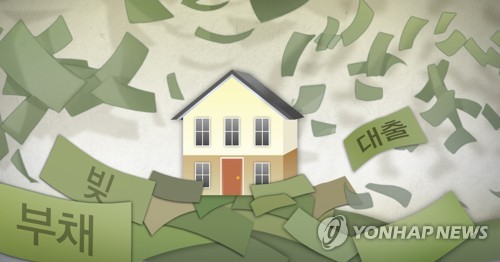Announcement of household debt plans in the middle of next month… “Boughtovers exceeding 40% of DSR do not retroactively”
Review of easing requirements for Bogeumjari Loan… Including repayment of principal amount of credit loan

(Seoul = Yonhap News) Reporter Kim Nam-kwon = The financial authorities decided to announce a household debt management plan in the middle of next month, which is the key to’applying a 40% total debt repayment ratio (DSR) by borrower’ as early as possible.
The 40% regulation is not retroactively applied to borrowers who have borrowed more than 40% of the DSR before the regulation was applied.
An official from the financial authorities said on the 28th, “The 40% DSR regulation only applies to borrowers who receive new loans after the time of application.”
DSR is an index that calculates the principal and interest repayment burden for all loans of borrowers during loan review. It reflects the burden of principal and interest not only in mortgage loans, but also in all financial sector loans including credit and card loans.
Currently, each bank only needs to manage the average (40%), so borrowers are also making loans with a DSR of more than 40%. Bank customer A has a DSR of 20%, and B has a DSR of 60%.
In addition, according to the Democratic Party’s Office of Representative Jaesoo Jeon, the share of over 40% of the five major banks (KB Kookmin, Shinhan, Hana, Woori, and NH Nonghyup Bank) was 20% (based on new household loans from January to September 2020).
DSR 40-60% was 10.9%, 60-80% and 80-100% were 3.8% and 1.4%, respectively. Loans in excess of 100% of DSR also reached 4.0%.
The financial authorities are trying to change the average regulation for each bank to a 40% DSR for individual borrowers. It is based on the logic that loans must be made according to individual repayment capabilities.
The principle is that the application of regulations is not applied retroactively, but also is applied in stages over a certain period of time.
An official from the financial authorities said, “We will not apply the loan regulation from the next day, but will do it step by step over a period of several years.”
The financial authorities also decided to apply the regulation flexibly to the youth, even if it reflects the actual repayment ability of borrowers.
For young people with low incomes, this is a method that reflects the expected future income when applying the loan regulation.
It is also a target of promotion by sharing the principal of credit loans.
Currently, credit loans only pay interest every month until their maturity, but the financial authorities have decided to introduce a plan to repay the principal as well as interest.
Financial authorities are considering imposing an amortization obligation on large credit loans that exceed borrowers’ income and exceed their ability to repay.
The issue of improving the requirements for bogeumjari loans is also included in the household debt management measures.
Bogeumjari loans can be borrowed up to 300 million won if they meet the conditions of an annual income of 70 million won or less (unmarried, married couples combined), and a house price of 600 million won or less.
Due to the soaring real estate prices, it is constantly being pointed out that it is difficult to find houses (less than 600 million won) for Bogeumjari loans in Seoul.
An official from the financial authorities explained, “It has not been decided whether the improvement of the requirements for the Bogeumjari loan will be a long-term review task or as a concrete improvement plan when it is announced this time.”
[email protected]
(End)
<저작권자(c) 연합뉴스, 무단 전재-재배포 금지>
